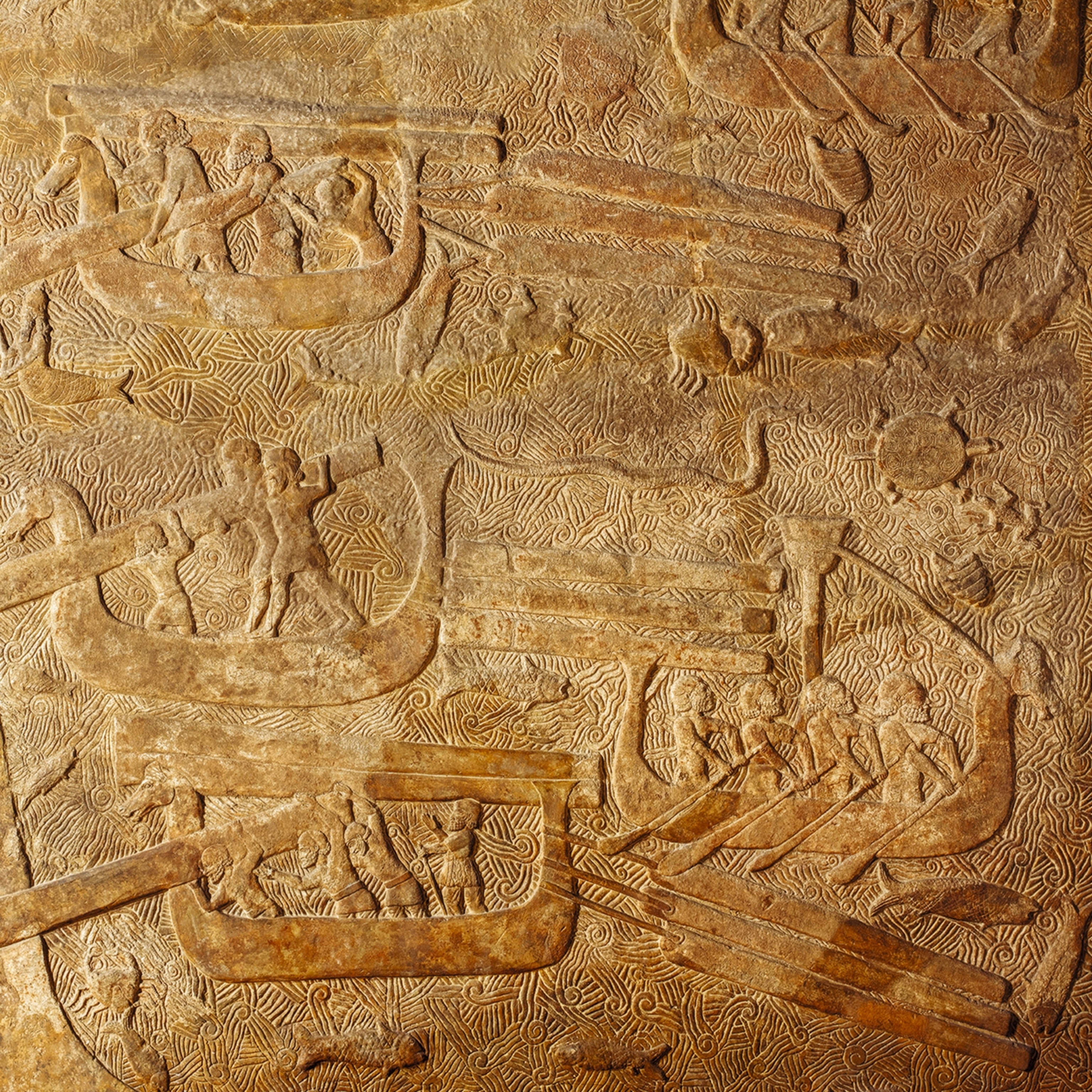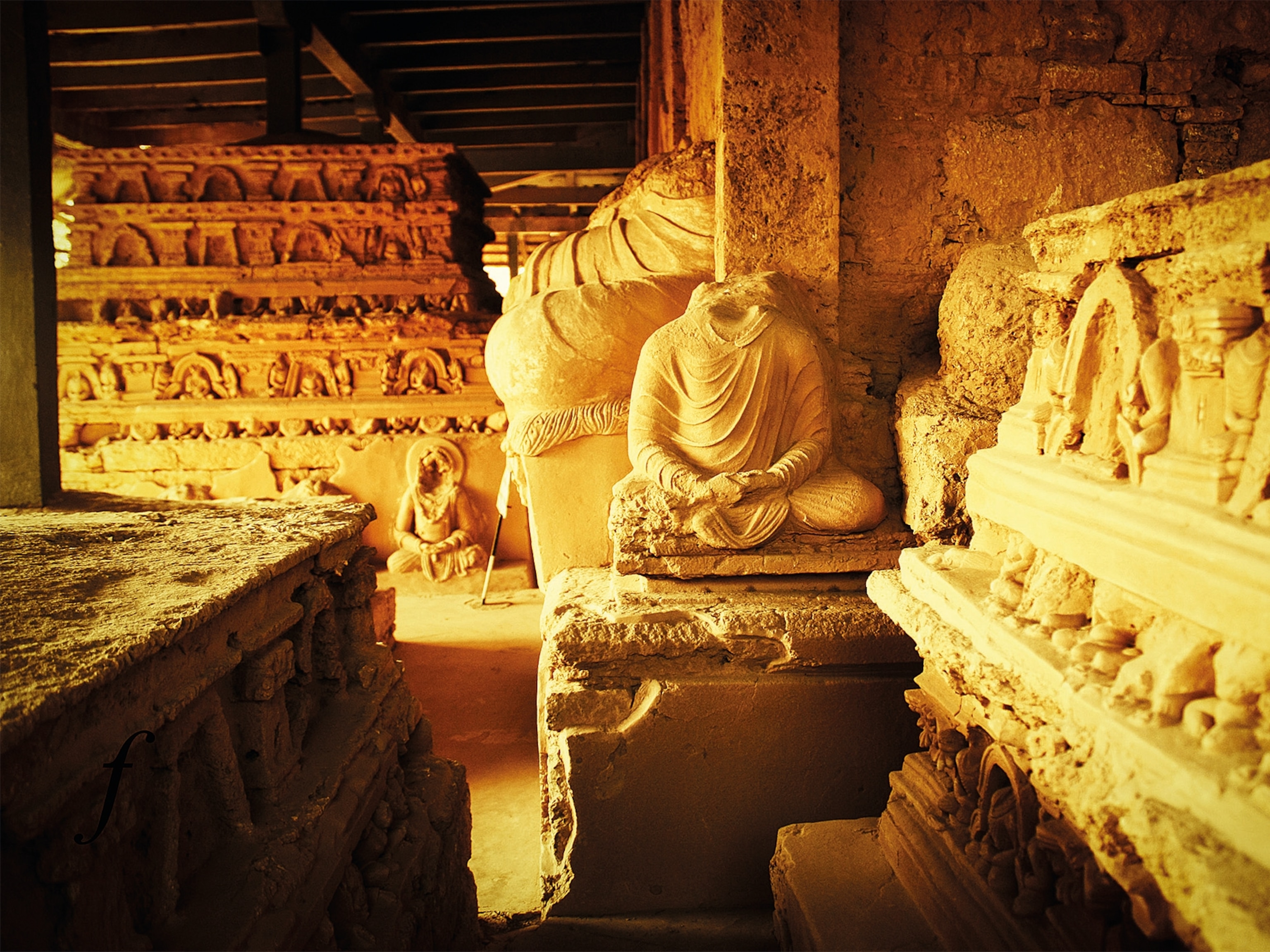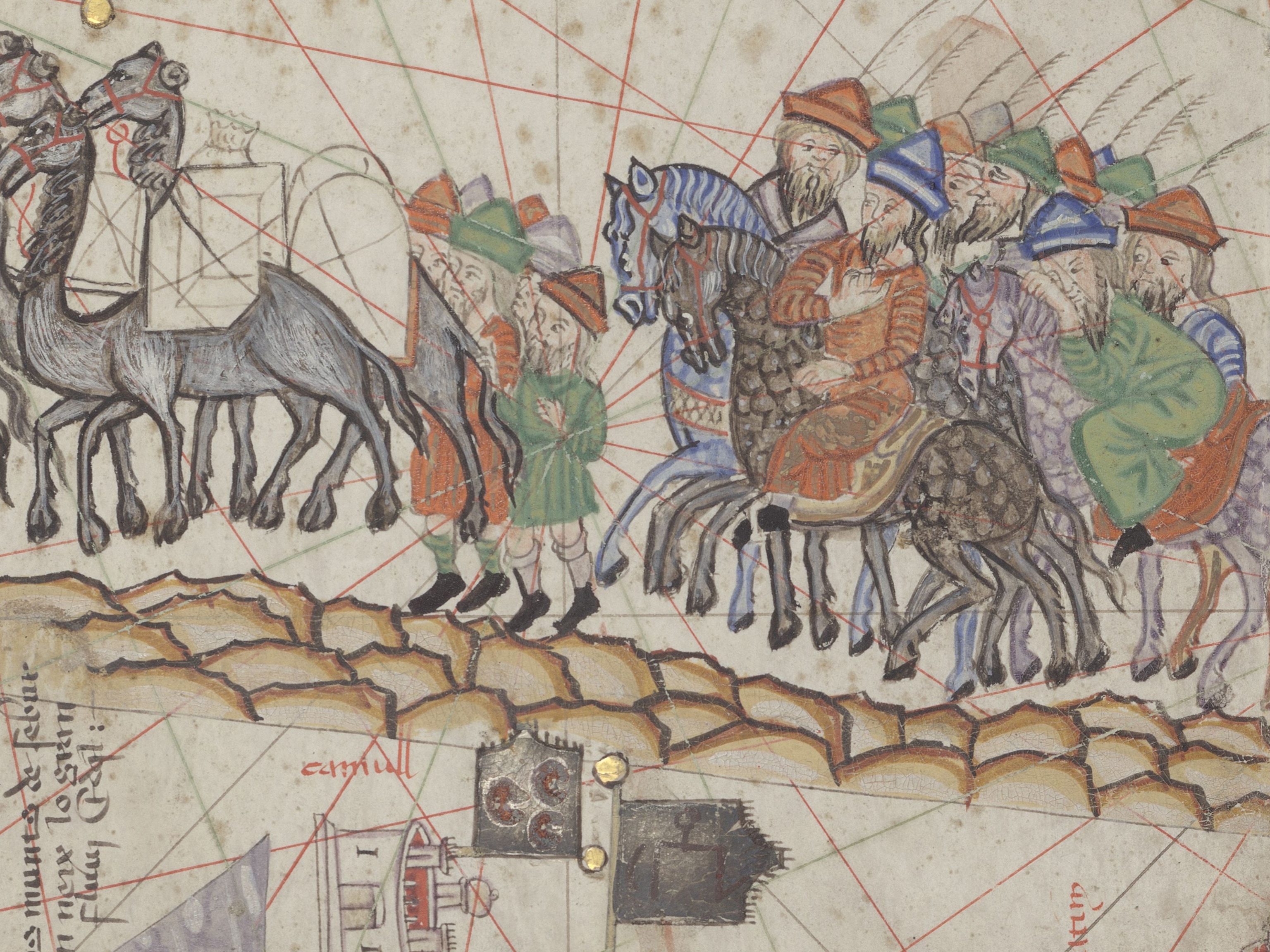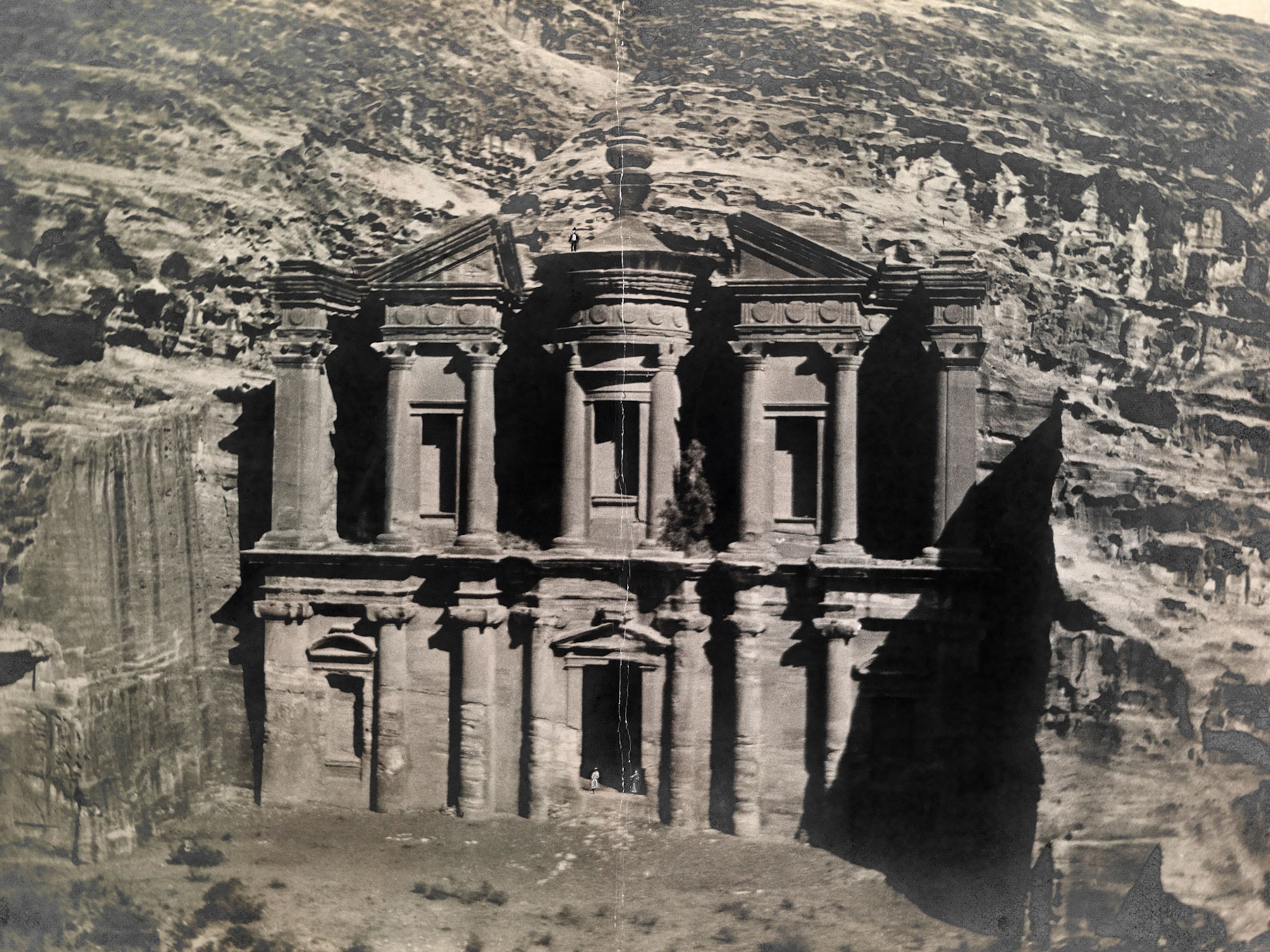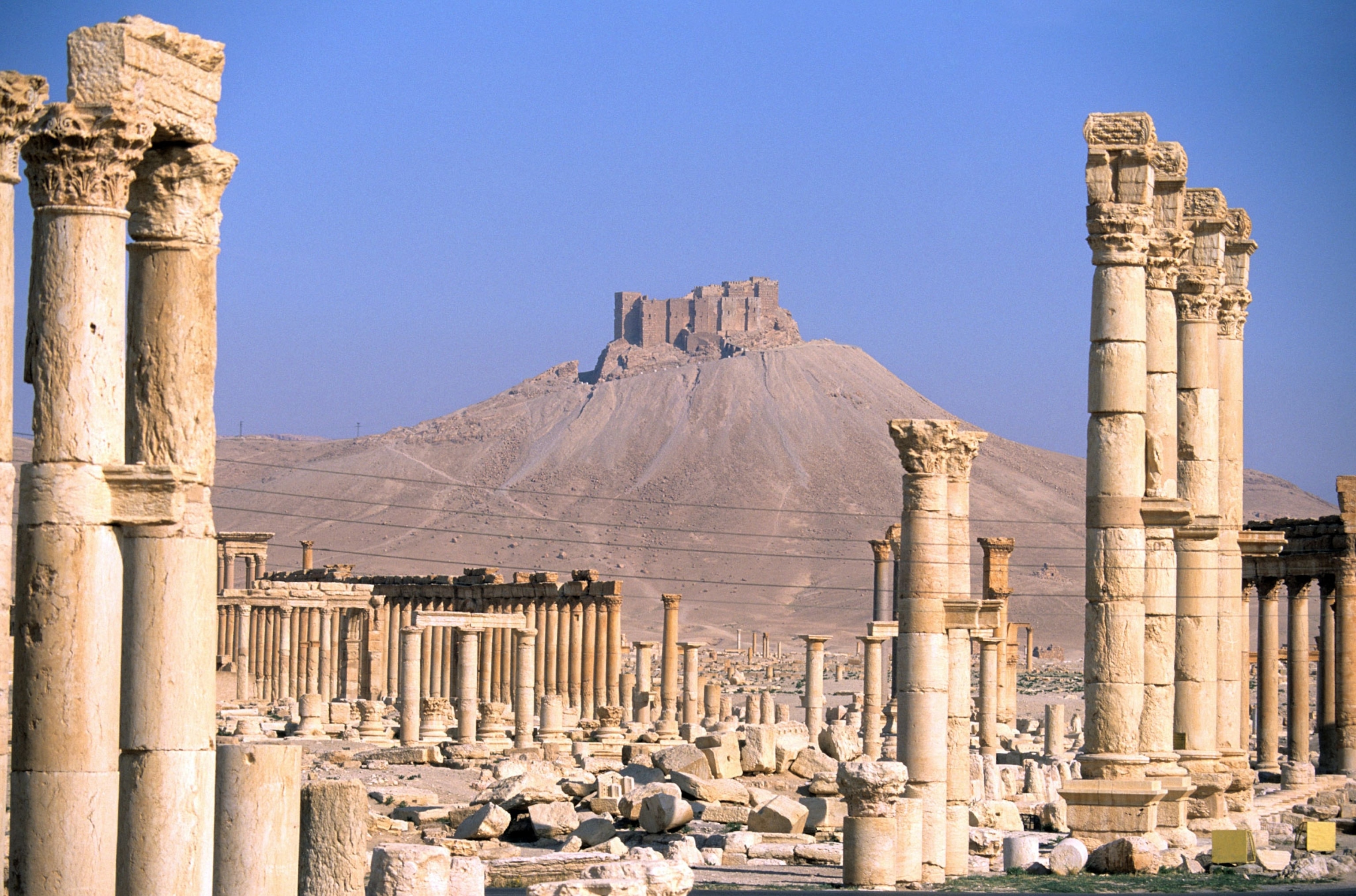
How Ancient Palmyra, Now in ISIS's Grip, Grew Rich and Powerful
A distinctly multicultural trading center grew rich on trade between east and west, until it rebelled against its most powerful customer.
Updated August 31 at 12:00 pm ET.
In Palmyra, history is literally written on the walls: across temples and above doorways, encircling funerary monuments and snaking up the towering limestone columns that rise above the Syrian desert some 134 miles (215 km) northeast of Damascus.
These inscriptions were often written both in Greek and Palmyrene Aramaic, a bilingual phenomenon unique to Palmyra. The site is a UNESCO World Heritage site that has been a focus of international attention since May, when the Islamic State (ISIS) seized the territory around the ancient ruins.
The inscriptions provide unique insight into life in a distinctive frontier city where, for centuries, local merchants controlled trade between the Mediterranean and Mesopotamia. (Read about out how Palmyra thrived in an infertile desert.)
One example: an inscription from around 130 A.D., in which the Senate of Palmyra honored a citizen named Male Agrippa for building a temple dedicated to Baal Shamin, the Semitic god of the heavens, to commemorate an earlier visit by the Roman emperor Hadrian. The bilingual dedication was inscribed at the entrance to the temple, which featured a unique mix of Roman and Near Eastern architectural styles.
Male Agrippa’s gift to his city, the Temple of Baal Shamin, was destroyed by the Islamic State on August 23rd.

Palmyra’s largest and most important temple, meanwhile—the Temple of Bel—was allegedly damaged by explosions over the weekend. According to an inscription in the temple, the iconic building was consecrated to Bel, the chief god of the Palmyrenes, during an ancient Babylonian New Year’s celebration in 32 A.D.
The extent of the damage to the temple is not yet known.
Forces from ISIS allegedly planted improvised explosive devices (IEDs) across the entire site in late June. "I am seeing Palmyra being destroyed in front of my eyes," says Syria’s Director of Antiquities Maamoun Abdulkarim. "God help us in the days to come." (Learn more about the Islamic State’s campaign against archaeological sites.)
The Islamic State is also responsible for the recent torture and murder of Khaled Asaad, the 82-year-old former director of antiquities at Palmyra. He is survived by 11 children, including a daughter, Zenobia, named after the city’s legendary queen.
A Crossroads and Melting Pot
Palmyra (known until the Roman period as Tadmor) is mentioned in historical records as far back as 3,800 years. But it was in the first through third centuries A.D., that the desert oasis reached its height as a pivotal hub for trade between Rome and the Parthian and later Sasanian empires to the east.
Palmyrene merchants grew wealthy through taxing and protecting caravans that made their way across the Syrian desert to the Euphrates River and down to the Persian Gulf, ferrying gems and spices to the markets of the Mediterranean in return for precious metals, glass, and other luxury materials that have been found as far away as India.
While the powerful merchants of this frontier town may have worshipped eastern gods, they also embraced the practices of the Roman elite.Maura Heyn, University of North Carolina, Greensboro
Along with the caravans came a wealth of cultural influences, and among the thousands of inscriptions recorded at Palmyra are dedications to gods and goddesses from Phoenician, Babylonian, Arab and Canaanite traditions.
The Roman Empire controlled Palmyra to varying degrees over the centuries, and while the powerful merchants of this frontier town may have worshipped eastern gods, they also embraced the practices of the Roman elite, says Maura Heyn, an associate professor of classical studies at the University of North Carolina, Greensboro and a specialist in the city’s funerary monuments.
“Palmyrenes were cowboys on the frontier, so to speak, but they were also participating in an empire-wide practice of embellishing their city with grand buildings,” she says, citing iconic monuments such as the Temple of Bel, dedicated in 32 A.D., and the 1200-yard (1.1 kilometer)-long Great Colonnade, built in the 2nd to 3rd century A.D.
Local citizens memorialized their hefty donations to these massive building campaigns with inscriptions across the city.
The ancient city celebrated for throwing off the yoke of western imperialism now may face an existential threat from fundamentalist militants from the east.
The elite of Palmyra also took cues from Rome when commemorating their dead. While funerary monuments might feature Aramaic inscriptions, the people depicted on them would be dressed in Roman finery. “These monuments actually provide us with some of the best evidence for jewelry in the Greco-Roman world,” says Heyn. “There are few cities in the Roman Empire that provide such an abundance of evidence for cultural change and negotiation.”
Imperial Defiance
Palmyra’s most famous citizen is undoubtedly Queen Zenobia, who leveraged the city's wealth and political chaos across the Roman Empire to briefly wrest control of the eastern Roman provinces of Egypt, Syria and Palestine and incorporate them into a larger Palmyrene Empire (269-273 A.D.). She was ultimately defeated and captured by the forces of Emperor Aurelian, who sacked Palmyra following a subsequent revolt.
The city never fully recovered, and the drastic decrease in wealth Palmyra once provided to Rome may have played a considerable role in the eventual decline of the western Roman Empire in the fifth century A.D.
Until the outbreak of conflict in 2011, Palmyra was one of Syria’s most popular tourist destinations, and modern Syrians feel a particular connection to the once-great merchant city that influenced and ultimately defied the power of Rome.
“Syrians consider Palmyra so special, because it's a source of pride for them,” explains Salam Al Kuntar, a Syrian archaeologist and visiting scholar at the University of Pennsylvania. “[They] feel very faithful to this past history and the monuments and art that signify it.”
Ironically, the ancient city celebrated for throwing off the yoke of western imperialism now may face an existential threat from fundamentalist militants from the east.
Follow Kristin Romey on Twitter.


